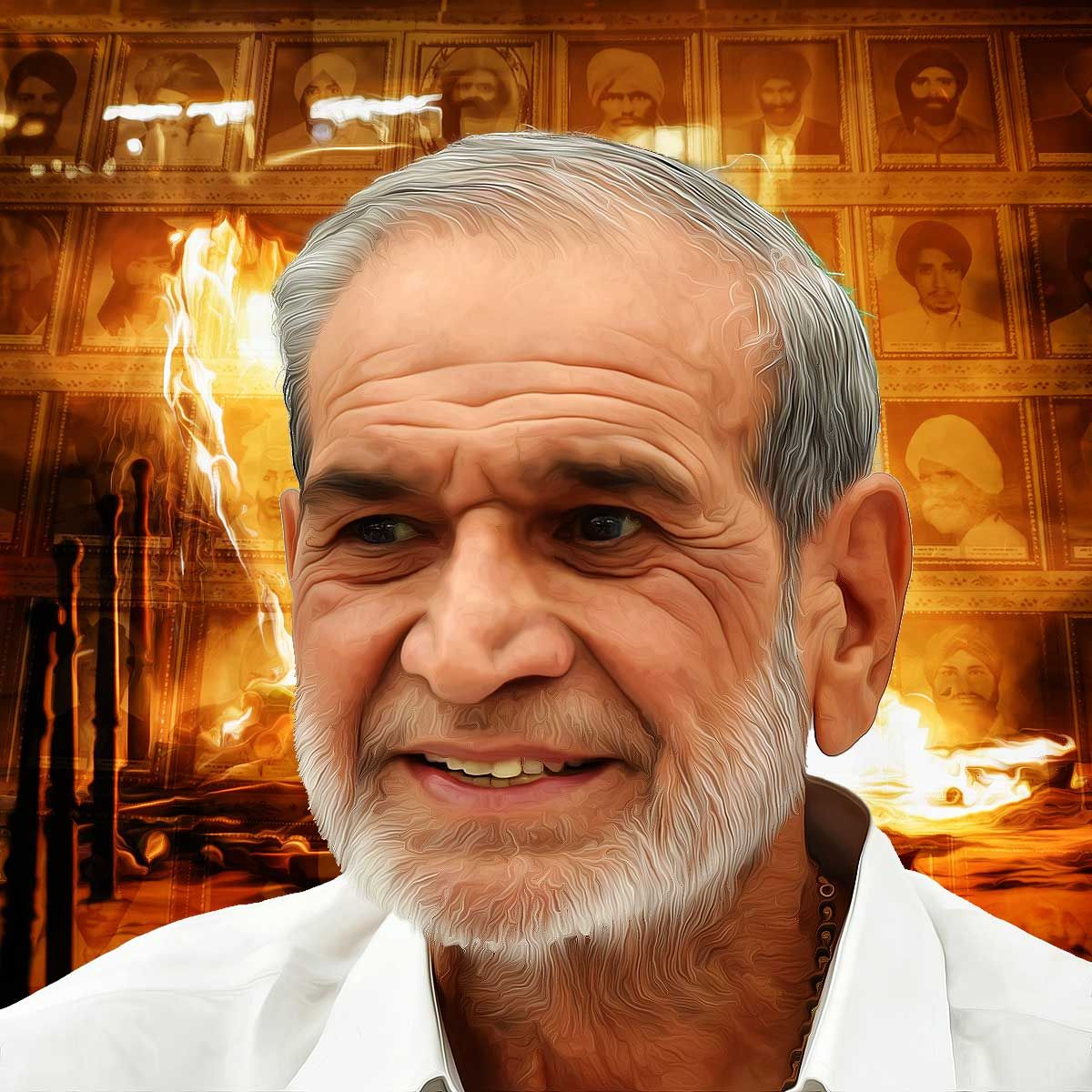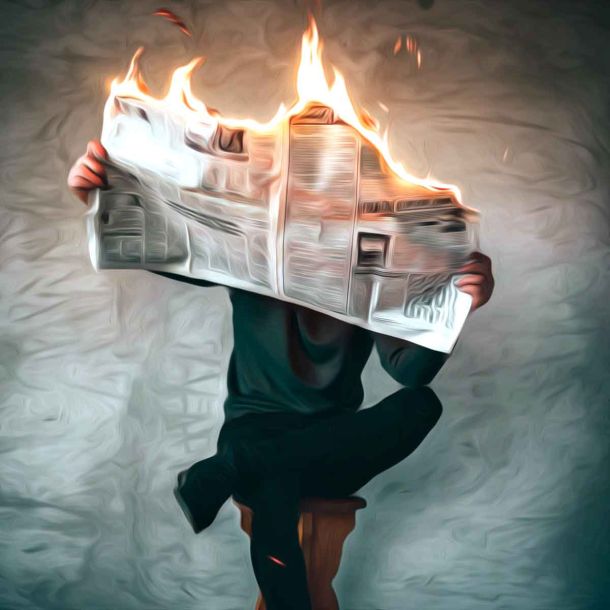More Coverage
Twitter Coverage
JOIN SATYAAGRAH SOCIAL MEDIA
"The universe always balances the books": Congress leader Sajjan Kumar faces intensified legal scrutiny over the 1984 anti-Sikh riots, amidst a slew of charges, the spotlight centers on his alleged abetment in the Janakpuri and Vikaspuri incidents

In a significant development on Wednesday, the Rouse Avenue Court of Delhi cast a spotlight on the dark chapter of the 1984 anti-Sikh riots, ordering the framing of charges against incarcerated Congress leader Sajjan Kumar. The directive pertains to two chilling incidents that remain etched in the collective memory of the nation.
|
|
The first incident, known as the Janakpuri case, revolves around the heart-wrenching assassination of two Sikh individuals, Sohan Singh and his son-in-law, Avtar Singh, on the fateful day of November 1, 1984. As if the horrors of that day weren't enough, the very next day saw another gut-wrenching episode unfold. This time, the case was registered at the Vikaspuri police station and revolved around the harrowing burning of Gurcharan Singh on November 2, 1984.
The series of charges that the Court aims to frame against Kumar paints a bleak picture of the alleged atrocities. The charges encompass a wide range of sections from the Indian Penal Code (IPC). Among them are IPC 147, dealing with the punishment for rioting, IPC 148 that tackles rioting when armed with a deadly weapon, and IPC 149, which pertains to offenses committed by any member of an unlawful assembly with a shared objective. The list also includes serious charges like IPC 307 and 308, highlighting attempts at murder and culpable homicide. Additionally, charges like IPC 153, which deals with promoting enmity between different groups, and IPC 295, addressing injuring or defiling a place of worship with an intent to insult any religion, underline the gravity and extent of the alleged crimes.
In essence, this latest court directive serves as a stark reminder of a grim chapter in India's history, highlighting the long and often arduous journey towards justice for the countless victims of the 1984 anti-Sikh riots.
In a detailed deliberation on Wednesday, Special Judge MK Nagpal of the Rouse Avenue Court of Delhi dissected the role of Congress leader Sajjan Kumar in the haunting 1984 anti-Sikh riots. Although the court ruled out framing charges under sections 302 (Punishment for Murder) and 325 (Punishment for voluntarily causing grievous hurt) of the Indian Penal Code (IPC), the weight of the evidence against Kumar in other aspects is nothing short of incriminating.
Elaborating on the circumstances and nature of the events that transpired, Judge Nagpal presented a chilling account. “On examining the voluminous oral and documentary evidence, it appears that a sizeable and menacing mob, estimated in the hundreds and armed to the teeth with weapons like dandas, iron rods, bricks, and stones, had congregated near the Gurudwara in Gulab Bagh, Nawada on November 1, 1984,” he said.
The imagery painted by the judge offers a grim snapshot of that tumultuous period, where mob fury reigned supreme, often unchecked. Delving further, the court identified that the accused, Sajjan Kumar, was not merely an innocent bystander but an active participant in the mob's violent spree. The overarching objective of this mob was chillingly clear: to target and decimate Sikh homes and places of worship in a vengeful response to the assassination of then Prime Minister Indira Gandhi.
|
|
But what makes this case particularly distressing is the court’s finding regarding the mob's intent. The objective wasn't just to inflict damage, but also to strike terror by looting, burning, and annihilating Sikh properties and lives in the targeted locality. Such actions sought to send a message, one rooted in revenge and hatred.
Drawing upon the substantial evidence and connecting the dots, Judge Nagpal concluded, "The evidence against Kumar is damning, with a prima facie case of involvement in several offences, ranging from rioting to promoting enmity between groups, attempting murder, causing hurt, and more." Consequently, the court directed that charges be framed against Kumar under sections 147/148/149/153A/295/307/308/323/325/395/436 IPC.
The verdict has once again ignited discussions surrounding the 1984 anti-Sikh riots, bringing to the forefront the quest for justice and the complexities of the Indian judicial system.
The court's meticulous examination of the evidence has unearthed not just the direct involvement but also the indirect influences that powered such heinous acts.
|
|
Broadening the scope of scrutiny, the court, in its statement, specified that Kumar is not only to be charged for direct involvement in the riotous acts but also for abetment, as defined by Section 107 IPC. The gravity of the term 'abetment' in legal parlance cannot be understated. It signifies instigation, intentional aiding, or engaging in a conspiracy. This move implies that Kumar, as a principal abettor, might not have committed the crime directly, but he was reportedly present at the crime scene. The acts of violence that erupted were allegedly influenced or even initiated by his presence and actions. The court emphasized this by noting, "The accused played a crucial role in inciting and escalating the situation, making him liable under Section 109 read with 114 IPC."
However, while the Janakpuri incident on November 1, 1984, is laden with allegations against Kumar, the subsequent event on November 2, 1984, takes a different turn. On this fateful day, outside the Congress party office in Uttam Nagar, a violent mob gathered, resulting in the tragic demise of Sohan Singh and Avtar Singh. Another individual, Harvinder Singh, sustained injuries in this chaos. The court, in its in-depth analysis, found no concrete evidence tying Kumar to these specific incidents. Reflecting on the exhaustive testimonies and evidence, the court chose to discharge Kumar from charges under sections 302 and 325 IPC related to this incident. The rationale for this decision, as the court stated, has been extensively discussed in their order.
This intricate legal affair saw representation from both sides with utmost dedication. Manish Rawat and Gaurav Singh, the Additional Public Prosecutors, led the prosecution on behalf of the Central Bureau of Investigation (CBI). On the other hand, a trio of seasoned legal minds, Anil Kumar Sharma, SA Hashmi, and Anuj Sharma, stood firm in defense of Sajjan Kumar.
As the case continues to unfold, it becomes a reflection of India's relentless pursuit of justice, even decades after the incident, proving that time might heal, but it doesn't erase the need for accountability.
 Support Us
Support Us
Satyagraha was born from the heart of our land, with an undying aim to unveil the true essence of Bharat. It seeks to illuminate the hidden tales of our valiant freedom fighters and the rich chronicles that haven't yet sung their complete melody in the mainstream.
While platforms like NDTV and 'The Wire' effortlessly garner funds under the banner of safeguarding democracy, we at Satyagraha walk a different path. Our strength and resonance come from you. In this journey to weave a stronger Bharat, every little contribution amplifies our voice. Let's come together, contribute as you can, and champion the true spirit of our nation.
 |  |  |
| ICICI Bank of Satyaagrah | Razorpay Bank of Satyaagrah | PayPal Bank of Satyaagrah - For International Payments |
If all above doesn't work, then try the LINK below:
Please share the article on other platforms
DISCLAIMER: The author is solely responsible for the views expressed in this article. The author carries the responsibility for citing and/or licensing of images utilized within the text. The website also frequently uses non-commercial images for representational purposes only in line with the article. We are not responsible for the authenticity of such images. If some images have a copyright issue, we request the person/entity to contact us at This email address is being protected from spambots. You need JavaScript enabled to view it. and we will take the necessary actions to resolve the issue.
Related Articles
- Was Indira Gandhi a Soviet Agent - 100 Years of Russian Revolution
- How Political ambitions of the Congress has silenced contributions of uncountable freedom fighters
- Rajiv Gandhi didn't call Army for 3 days, had no intention to stop 1984 Sikh massacre: Watch his speech justifying the riot
- "PM Modi mentions the 1966 bombing of Mizoram": When Indira Gandhi had ordered the IAF to carry out an aerial attack in Aizawl and its aftereffects that still reverberate in India's history, capturing Mizoram's tumultuous journey through adversity
- Wikileaks and 5 lesser know facts of Indira Gandhi: Nuclear technology, corruption and foreign relations
- Biggest Secret Reveal - How ties between Indra Gandhi and KGB made India a puppet of USSR during the Cold War
- Jodhpur witnesses rampant violence on Eid as mob goes on a rampage after Namaz: Muslim mob replaced Bhagwa flag with an Islamic flag at Jalori intersection
- Rare footage of Pakistan Army surrendering to Indian Armed Forces after the humiliating defeat in 1971 war: Vijay Diwas
- How undisciplined Indira Gandhi when expelled from Congress Party by 'Syndicate', divided the party into two: 12 November 1969
- Ghost from the past: Unseen picture of Nehru voting in favour of partition of India goes viral






















